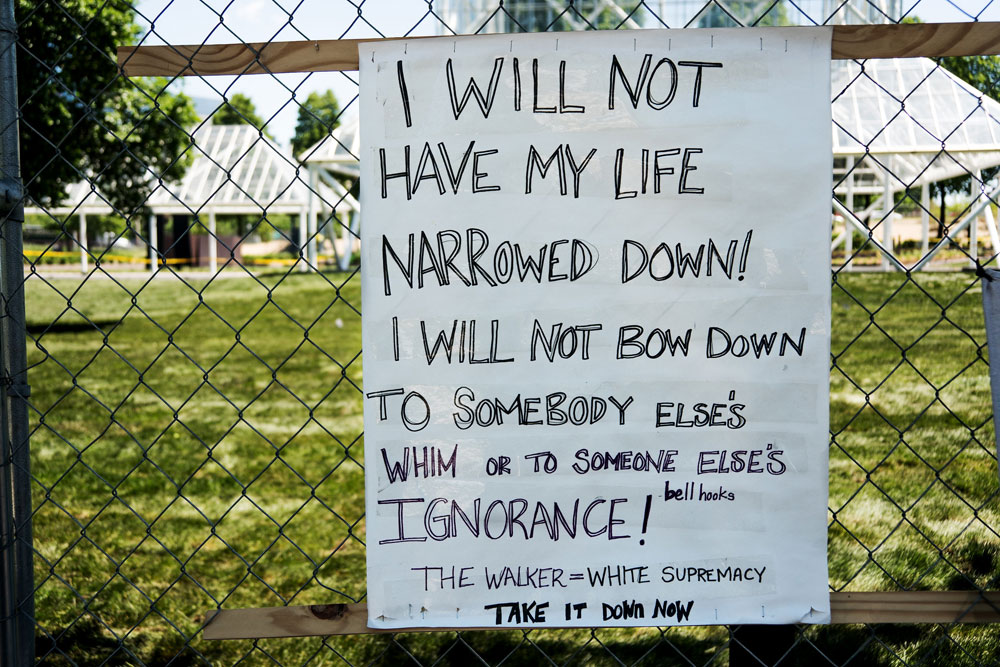
August 12, 2020; Star Tribune
Since 1933, Ramsey County and St. Paul City Hall chambers have hosted four murals depicting oversized white men standing above smaller images of laborers and Native Americans—murals widely seen as reflecting a racist, white supremacist worldview. That changes next week, when the murals will be covered by four new artworks chosen by a citizen task force in tandem with the Ramsey County Historical Society.
While the new artworks represent a diverse group of artists, including a northern Minnesota artist with Anishinaabe heritage, the Dakota, on whose land St. Paul sits, were not consulted.
Oyate Hotanin, or Voice of the People, is a 501c3 nonprofit collective of indigenous artists based in Mni Sota Makoce, the Dakota homeland, which includes the modern-day city of St. Paul. The group works to decolonize existing art spaces and to respond to current and historic trauma through the development of new art works and voices.
Previously, Oyate Hotanin was influential in helping remove the controversial “Scaffold” exhibit hosted by the Walker Art Center in Minneapolis. The project, also displayed on Dakota land, evoked the setting of seven executions including hangings of Dakota men after the United States-Dakota war of 1862.
The Oyate Hotanin’s response to “Scaffold,” a visual arts project called Indigenous Estate, highlights how Native images often are appropriated by non-Native artists even on Native land. According to the group’s website, “Indigenous perspectives are imperative to avoid future trauma to our people like that visited upon us with the scaffold installation.”
Sign up for our free newsletters
Subscribe to NPQ's newsletters to have our top stories delivered directly to your inbox.
By signing up, you agree to our privacy policy and terms of use, and to receive messages from NPQ and our partners.
According to Crystal Norcross, the board chair of Oyate Hotanin, Dakota people have been left out of the conversation since December 2018, when discussions began about changing the murals in City Hall chambers. Originally, the plan was to remove two murals and keep two—a compromise that pleased few.
After the killing of George Floyd in May galvanized efforts across the country to remove art and monuments deemed racist, the historical society agreed that all four murals should be covered up. Still, even then, the Dakota remained shut out.
In addition to Oyate Hotanin’s complaints, two Minnesota lawmakers, Rep. Mary Kunesh-Podein (D-New Brighton) and Rep. Jamie Becker-Finn (D-Roseville), reached out to the Ramsey County Board this past Tuesday to express similar concerns that the Dakota community were left out of the conversation.
Rep. Kunesh-Podein, herself of Standing Rock Sioux ancestry, was quoted by the Star Tribune as saying, “There are a number of elders and Dakota artists that would have liked to participate in the decision-making. We have a very active Dakota artist community.”
Ramsey County commissioners voted unanimously on Tuesday in favor of installing the four new artworks despite the criticism, but Ramsey County Board Chair, Toni Carter, did state that “there needs to be continued conversation and the recognition…that we are on Dakota land.” The new artworks are temporary and could be moved in the future. Maybe then, finally, the Dakota nation will be included.—Carla Yengo-Kahn













